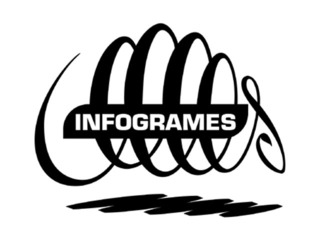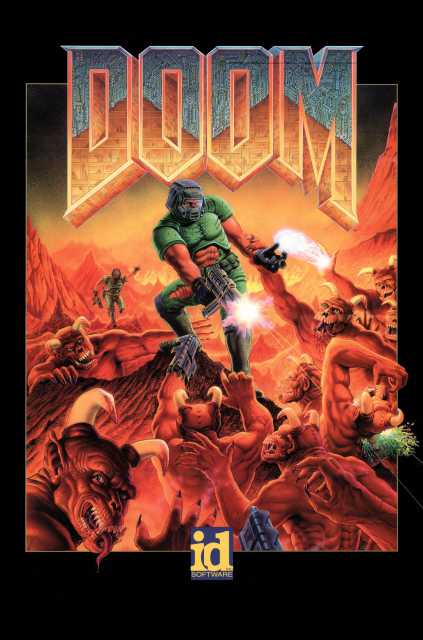Current State
The company that currently bears the Atari brand name and logo is officially Atari SA, formerly known as Infogrames Entertainment SA. (IESA). In October 2008 Infogrames completed the purchase of Atari, Inc., buying out all remaining public shares of the company for a total of $11 million making Atari, Inc. a privately held company and a fully owned subsidiary of Infogrames SA. All Atari subsidiaries were now held buy the holding company Infogrames SA. In May 2009 IESA announced that it would be changing its name to Atari SA. to remove the confusion surrounding the Atari and Infogrames brands.
Atari SA., based in France now acts as a holding company for all the remaining Atari subsidiaries, (known collectively as Atari Group) the largest being Atari, Inc. based in the U.S. which accounted for more than 80% of consolidated revenue for the fiscal year 2009/2010.
Divisions of Atari SA include:
On April 19th, 2010 Atari, S.A. announced Nolan Bushnell, the founder of the original Atari company, along with Tim Virden would join the company's Board of Directors.
History
1980s: The birth of Infogrames Entertainment
 Infogrames Entertainment logo.
Infogrames Entertainment logo.Infogrames Entertainment SA (IESA) was founded by Bruno Bonnell and Christophe Sapet in June 1983, who at the time were at university studying Chemical Engineering. The company was based in Villerbanne, outside Lyon, France. Soon after it was founded, Thomas Schmider joined the company and they started writing programming software. Infogrames started developing family orientated software for the fast developing personal computer market but had also ventured into the video games market. Infogrames quickly established itself as recognized video games developer, albeit in a very new industry by developing and publishing games such as Autoroute Highway and Le Cube Informatique.
Early on in the business Infogrames found is difficult to secure funding to grow its video game division due to the reluctance of investors to invest in such a new, risky and untested market. Infogrames continued to grow slowly and by the end of the 1980s it had acquired several licenses such as the popular comic book Tintin, Asterix and Les Tuniques Bleues. It also moved away from the software market and focused solely on developing video games. Infogrames Entertainment's first big success occurred with the release of Tintin on the Moon which helped drive the companies sales passed FFr 100 million mark (est. $20 million).
Early 1990s
Infogrames quickly began to develop games for new gaming systems currently entering the market such as the SNES and Game Boy. It saw this as a major area of growth for the video games industry as owning a gaming console was much cheaper than a personal computer. However Infogrames continued to develop games for the PC and Macintosh computers. Its early adoption of the Nintendo gaming platform proved fruitful as its video game sales increased dramatically.
Infogrames started to invest heavily in research and development to keep up with the ever increasing sophistication of computer technology. This lead to better looking games featuring 3D graphics but also increased development cycles for these games. A game which benefited from this program was Alone in the Dark which took 2 years produce and was released in 1992. This game became an international success and provided instant recognition for the company. A long run of sequels followed for this franchise.
 Doom.
Doom.Infogrames was publicly floated in 1993, with a listing on the Paris 'Second Marché' Stock Exchange to fuel its growth and ambition to become one of the world top video game developers. This was very successful for Infogrames and shareholders were lining up to buy a stake in the company. 61 million share requests were made for 115,000 shares available. The major shareholders included Chargeurs Group and Philips Media; a subsidiary for Dutch conglomerate, Phillips. Later that year Infogrames released a line of commercially successful games such as Asterix, Doom, Marco Polo and Myst.
In 1994 Infogrames started its international expansion by first creating subsidiaries in major European markets. It created Infogrames Entertainment Benelux in Brussels, Belgium and then aligned with Compagnie Luxembourgeois de Telecommunication (CLT, now RTL group) to from Infogrames Entertainment GmbH, in order to enter the German market. Later than year IESA sold an additional 230,062 shares in the company raising 75,920,460 FF. (est $15 million) By the end of 1994 Infogrames had become the France's largest video game developer beating French rivals Cryo and Ubisoft but was still small in comparison to international giants such as Electronic Arts.
1996-2000: Growth through acquisitions
Infogrames long term ambition of becoming the world largest video game developer had not diminished and it sought to do so by way of acquisitions. In 1996 it embarked on this acquisition program by purchasing UK based Ocean Software Ltd. for $100 million and subsequently remained it Infogrames UK. This acquisition gave Infogrames the opportunity to extend its software development capacity, access to Ocean's huge licensed video game catalog and most importantly entrance to the American market via Ocean's U.S. subsidiary. By the end of 1996, more than 70 percent of Infogrames' sales came from beyond its home country, taping into the global presence of the video game industry, now reaching total combined sales of $4 billion.
The following year Infogrames bought out Philips Media's publishing and distribution business which made IESA, the leading developer, publisher and distributor of interactive entertainment software in Europe. It also gained presence in the Australian market by purchasing a majority stake in game distributor Ozesoft, renaming it Infogrames Australia. IESA sort to diversify into the multimedia business and jointly formed Game One with Canal and launch Europe's first dedicated video game TV channel. It also acquired ABS Multimedia, Arcadia and Swiss Gamecity GmbH. With Infogrames previous acquisitions and its ever growing video game library, annual sales topped 1.4 billion FF ($270 million) by the end of its 1998 fiscal year.
Even with the recent purchases, IESA did not stop with its quest to dominate the video game industry. It sort to procure smaller sized game development companies in an effort to consolidate what was a highly fragmented industry. In 1999 it raised a further 600 million FF (est. $115 million) through share sales and acquired graphics design company Psygnosis Paris, Australian Beam Software; renaming it Infogrames Melbourne House Pty Ltd, United Kingdom's Gremlin Interactive and US based Interplay and Acolade Inc. IESA also increased it global reach by adding distribution houses in Austria, Brazil, Canada, Italy, Japan, Portugal, Scandinavia, Spain and Switzerland.
Later that year Infogrames made its most important acquisition to date, with the purchase of U.S. based GT Interactive, (Good Times or GTI) a major game publisher and distributor who had popular hits such as Duke Nukem, Driver and Unreal Tournament. This acquisition tripled Infogrames workforce cost the company $210 million including GTI's current debt. Infogrames also acquired all GTI's assets including development studios such as MacSoft, WizardWorks, Humongous Entertainment, Legend Entertainment and Reflections Interactive. GT Interactive was later renamed Infogrames, Inc and became IESA's North American subsidiary. With this acquisition IESA became the second largest video game developer and publisher in the video game industry.
Infogrames continued to expand its business in the multimedia sector by purchasing a 50% stake in Canal Multimedia and entered the expanding mobile telephone market. It continued to purchase more video game companies such a Texas based Paradigm Entertainment, Den-O-Tech and formed a joint venture with Japan's Hudson Soft Co. Ltd. By the end of the decade IESA's revenue topped $850 million and the company was preparing for a new era in the video game industry with the arrival of new generation video game consoles that included the Nintendo GameCube, Sony PlayStation 2, and Microsoft Xbox.
Infogrames' association with Atari
2001 was the year when Infogrames first began its association with Atari which would eventually lead to the complete re-branding of the company.
 Atari's revamped logo.
Atari's revamped logo.Infogrames purchased Hasbro Interactive from Hasbro for $100 million. Included in the sale were all rights to Hasbro Interactive's properties and subsidiaries including Atari Corporation - the original Atari company - which was at that time owned by Hasbro Interactive. This gave Infogrames exclusive rights to games franchises such as Civilization and Dungeons and Dragons. Hasbro Interactive was later renamed Infogrames Interactive, Inc. and Atari Corporation became Atari Interactive, Inc. which was a subsidiary wholly owned by Infogrames Interactive, Inc. At this time the Atari brand was not being actively used to promote Infogrames as a company or its various rights and properties.
2002 saw more publishing deals and acquisitions. First was a deal with BioWare Corp where Infogrames gained exclusive publishing rights for RPG game, Neverwinter Nights. Then in April IESA purchased Eden Studios based in France, popular for game titles such as V-Rally 3. This was followed by the purchase in Shiny Entertainment which was developing Enter the Matrix game for the upcoming Matrix movie.
These acquisitions in the past several years had an impact on IESA's financial position. The company debt had risen from $55 million in 1999 to $493 million in 2002 and it posted a net loss of $67 million in this financial year.
Atari and Infogrames acquisition history
The image below charts the history of how the original Atari, Inc. became incorporated into Infogrames and later became the new Atari SA.
 History of Atari
History of Atari
Log in to comment